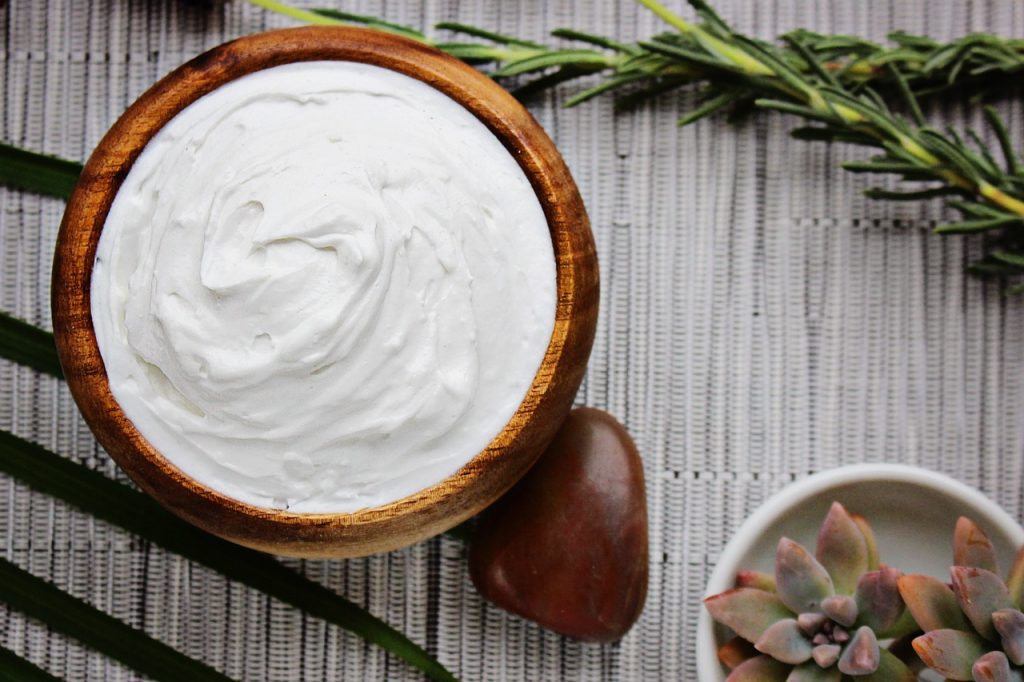Heavy cream is a staple ingredient in almost ALL of your favorite dishes — and for good reason. It’s used in a variety of recipes, which include homemade butter, sour cream, ice cream, sauces and soups. Sometimes referred to as heavy whipping cream, this kitchen staple is made from the high fat cream of fresh milk. When you leave fresh milk to stand, the heavy cream rises to the top and you can scrape that off.
With a fat content of up to 40 percent, heavy cream is higher in fat compared to other cream types, including light cream, whipping cream and half-and-half. Heavy cream nutrition is commendable, but the cream itself is still full of calories.
This article outlines everything you need to know about heavy cream nutrition (as well as heavy whipping cream nutrition) — heavy cream nutrition facts, its uses, benefits, potential downsides and healthier alternatives.
Nutrition Facts: How Many Carbs are in Heavy Cream?
In terms of carbohydrates, there isn’t much to worry about heavy cream since it has less than three grams of carbs. But heavy cream is mostly fat so it’s high in calories.
According to the USDA’s FoodData Central database, a service of heavy cream (100 ml) has the following nutrition facts:
- Calories. 340 kcal
- Fat. 2.9 grams
- Saturated fat. 23.1 grams
- Monounsaturated fat. 9.1 grams
- Polyunsaturated fat. 1.6 grams
- Carbohydrates. 2.7 grams
- Sugars. 2.9 grams
- Fiber. 0 gram
- Protein. 2.8 grams.
In terms of vitamins and minerals, heavy cream’s nutrition facts include the following (according to the daily recommended value):
- Vitamin A (Retinol). 45 percent
- Vitamin B1 (Thiamin). 2 percent.
- Vitamin B2 (Riboflavin). 15 percent
- Vitamin B3 (Niacin). 0.4 percent.
- Vitamin B5 (Panthothenic acid). 10 percent
- Vitamin B6. 2 percent.
- Vitamin B12. 7 percent
- Vitamin D. 8 percent
- Vitamin E. 6 percent.
Its whipped version, heavy whipping cream, the nutrition facts are slightly different. A half-cup of heavy whipping cream contains:
- Calories. 400 grams
- Carbohydrates. 3 grams
- Fat. 43 grams
- Protein. 3 grams
In the United States, whipping cream and heavy cream are very similar but with some slight differences:
- The differences in fat content; heavy cream is denser and firmer after whipping.
- Heavy cream contains at least 36 percent butterfat while the minimum butterfat for whipped cream is only 30 percent.
What are the Health Benefits of Heavy Cream?
As always, consult with your physician before adding to your diet. With heavy cream, you can expect:

A Healthy Source of Fat
Dietary fat plays an important role in many of the body’s processes. First, fat supports healthy metabolism and provides substantial amounts of energy. Also, dietary fat intake helps the body absorb fat-soluble vitamins A, E, K and D.
A Good High-Fat and Low-Carb Option for People with Diabetes
Low-carb and high-fat diets are good interventions for people with diabetes or who are struggling with obesity. With heavy cream’s high-fat content, it perfectly fits this profile.
A Good Source of Calcium
Heavy cream contains calcium, which is essential in skeletal health, as well as for the central nervous and muscular system.
Low Lactose Levels
Heavy cream contains lower amounts of milk sugar lactose compared to regular fresh milk. This may not make a big difference to people with severe lactose intolerance, but it could benefit people who have a lower degree of lactose sensitivity.
Heavy Cream Nutrition Concerns
Despite the nutrients of heavy cream, there is a big concern over the nutrient to energy density ratio of this staple kitchen ingredient. Heavy cream is extremely high in fat and calories.
This ingredient is energy-dense but not rich in nutrients, so if you consume more than you should, it could mean two things:
- You’re replacing nutrient-rich whole foods with heavy cream. You’re missing out on important nutrients.
- You consume large amounts of heavy cream in addition to your normal meals, which can result in weight gain.
Despite all of these, heavy cream is still a healthy dairy food option but it lacks the nutritional value that most whole food sources have (e.g. fish, meat or eggs). In other words, feel free to enjoy meals with heavy cream as long as you do so in portion sizes.
Healthier Alternatives to Heavy Cream
If you’re looking to replace heavy cream with a dairy-free or lower-fat alternative, there are many substitutes available. Consider the following:
- Milk and butter. Combining butter and milk is easy, one of the best heavy cream substitutes that will work for most recipes. Butter adds extra fat to the milk, giving it a similar fat percentage to heavy cream.
- Olive oil and soy milk. For a vegan and dairy-free heavy cream alternative, pair olive oil and soy milk for a function and flavor comparable to heavy cream.
- Cornstarch and milk. This combination is a low-fat, low-calorie alternative to heavy cream. Cornstarch thickens milk, which reproduces the texture of heavy cream.
Indulging in heavy cream is tempting, especially if it’s a staple in all of your meals and treats. There’s nothing wrong in doing so as long as you indulge in moderation!


